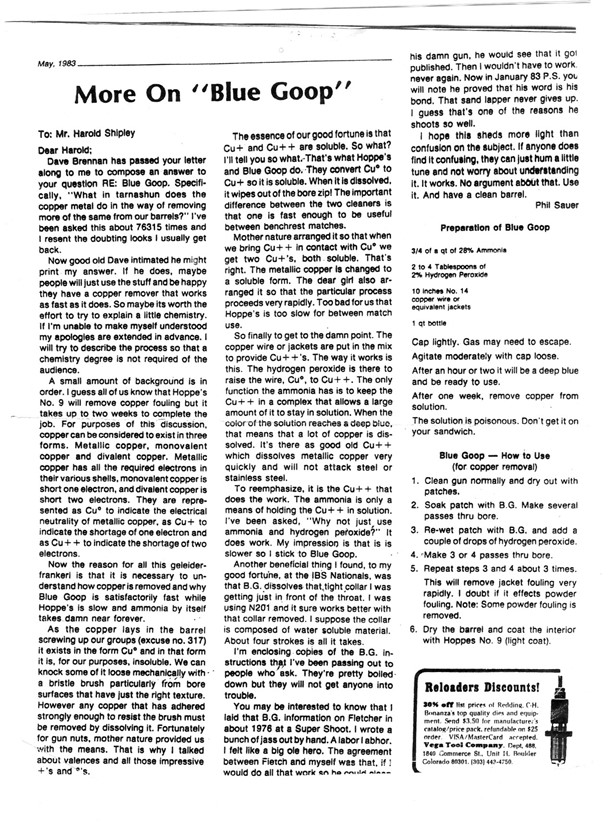This thread started with the question by max503 – does JB fouling degrade CB accuracy? It has wandered a bit with detours for cleaning elixirs and target cameras but I think the original question is worth working on. This warning of JB fouling is another conventional wisdom “we all know” that is supported by only anecdotal evidence as far as I can find – a very weak stick. In a 1-29-19 post I reported that my first try to test this old rule was questionable because of bore leading and said I would try again with bullets that fit better to avoid leading.
Our local range opened yesterday after a two-week closure by a 30” snow and today I shot another test. The CB load was a different lot of the 85 grain 25:1 spitzer bullets, Mag Tech SR primers, 6 grains of Blue Dot giving approximately the same MV as the earlier load with the same Tikka 223 rifle and no evidence of leading this time. The twenty rounds of jacket bullets were from the same box of Herter 55 grain wonders with the same load as before.
CB 5 round groups starting with a clean bore. -- .97, .84, 1.26, 1.08 moa -- Average 1.04 moa
Jacketed 5 round groups – 2.20, 2.48, 1.34, 1.76 moa – Average = 1.95 moa
CB 5 round groups after JBs -- .46, .80, 1.50, .92 moa – Average = .91, moa
For a person who believes that small differences in even two groups prove things (Joeb’s statistics be damned) this “proves” that a bit of guilding metal fouling improves accuracy of cast bullet loads by 14%.
But usually such conclusions are jumping the gun. It seems to me that these results give a hint, but not much more than a hint, that a bit of JB fouling may improve accuracy (in complete opposition to what most of us have been told). Consulting Joe’s tables this 14% improvement for eight 5 shot groups has a confidence level of much less than 70% -- far from certain. As usual, more groups need to be shot if we want to be more certain.
It would be interesting to see this experiment replicated with other calibers, alloys, muzzle velocities, increased JB fouling, etc. I hope someone will jump in and try it.
John

















